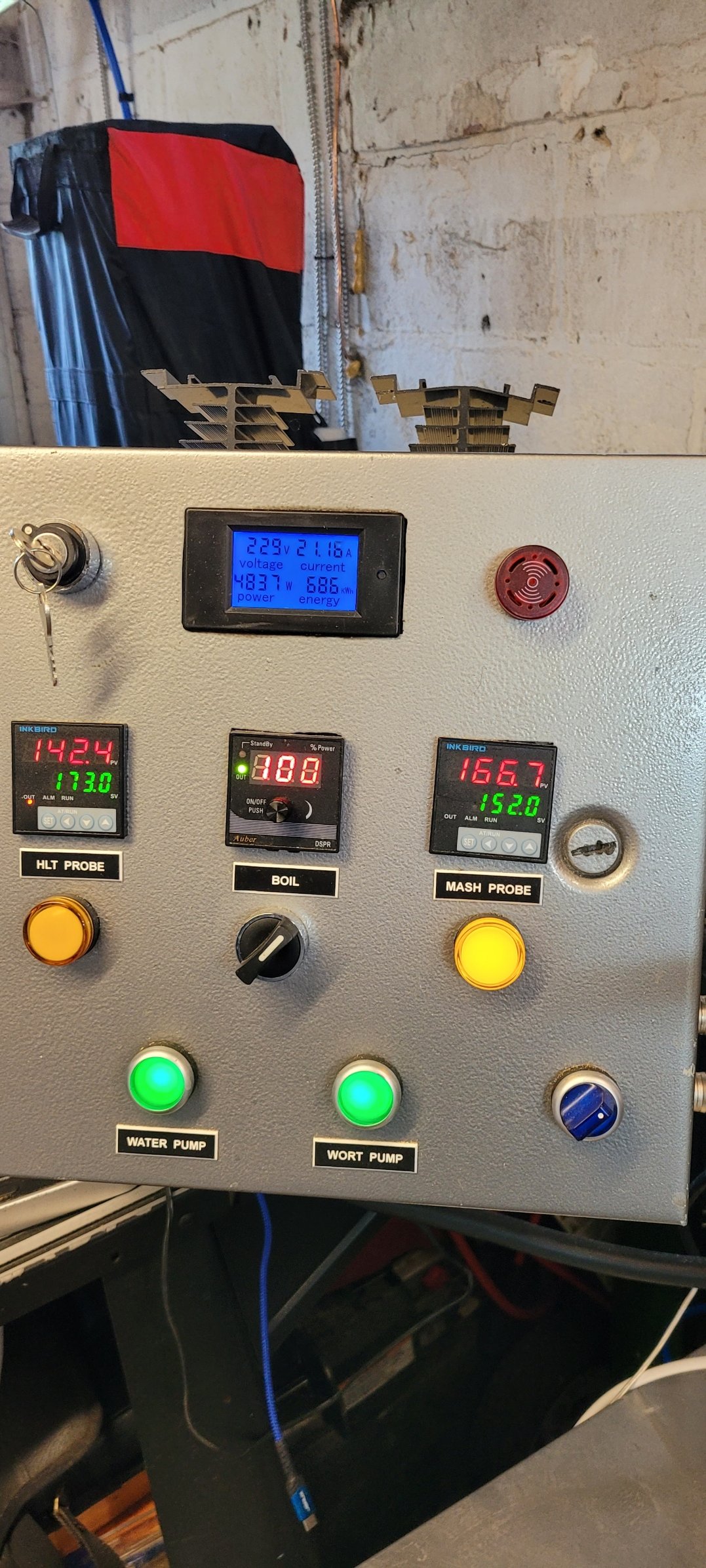I am in the process of designing a 50A panel and looking at the primary over current protection needed in my home panel... Here's where it gets fun... The two big names in the DIY/Pre built panel market, call these 50amp panels and say you just need a 50A breaker.. Well, after consulting the NEC book, the brew panel could be considered a "continuous load" (A load where the maximum current is expected to continue for 3 hours or more), given that I would be heating the strike water in the BK while the HLT is heating up.. the BK would be off for a little while while we are mashing, but as soon as the sparge starts, the bk element will be back on... 1 hour sparge, 30 minutes to heat up, 1 hour boil.. I feel we are tip toeing the line here on whether or not the panel breaker should be upsized to a 60A GFCI (which stinks, because they are not nearly as common as a 50A) due to the continuous load definition...
Granted an OCPD is rated to run at 100% capacity indefinitely without tripping if the load is by definition non-continuous..
What are you guys and gals seeing your panels draw when both elements and both pumps are running?
My design will incorporate some 4-20mA loops for flow and possibly density as well as a future 3rd pump to be possibly used as a BK condenser. This puts me right around a calculated current draw of 54A if everything was running at once..
Granted an OCPD is rated to run at 100% capacity indefinitely without tripping if the load is by definition non-continuous..
What are you guys and gals seeing your panels draw when both elements and both pumps are running?
My design will incorporate some 4-20mA loops for flow and possibly density as well as a future 3rd pump to be possibly used as a BK condenser. This puts me right around a calculated current draw of 54A if everything was running at once..




